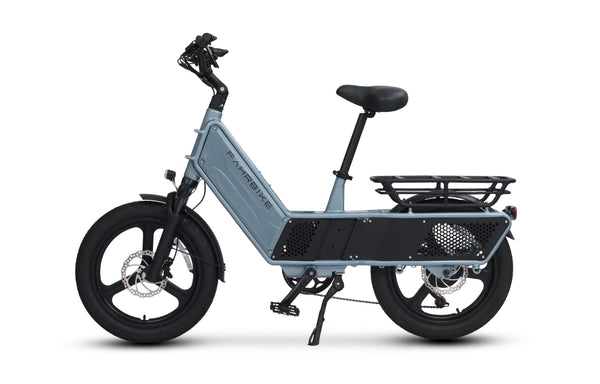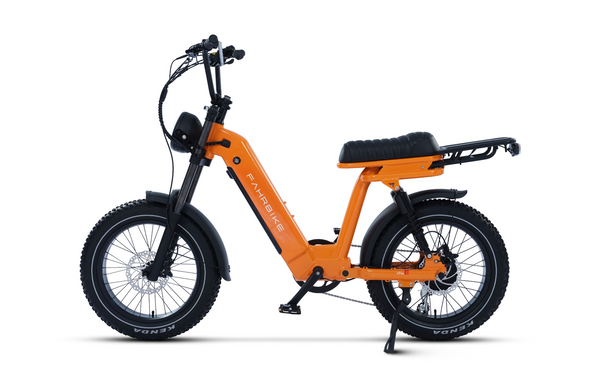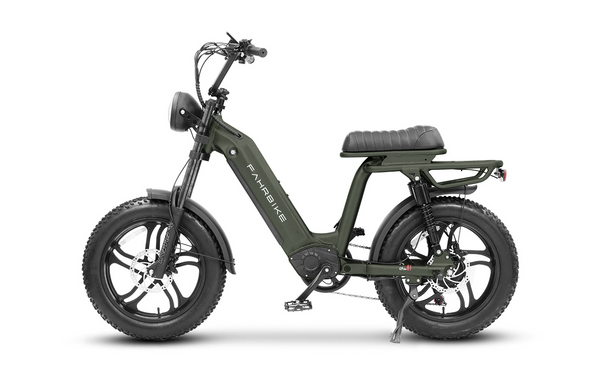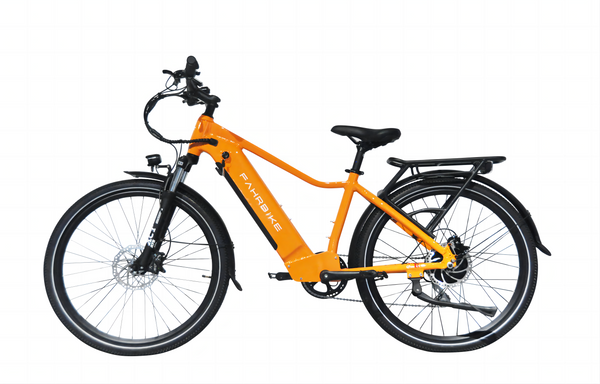A crucial aspect of electric bikes that often perplexes riders is determining their range – how far can you travel on a single charge? Manufacturers typically provide a maximum range for their electric bikes, but real-world factors can significantly influence this figure. In this guide, we'll explore the various elements that impact the electric bike range and offer practical tips on how to assess the true capabilities of your e-bike.
Unraveling the Advertised Range
It's not uncommon to encounter electric bike advertisements on maximum ranges, like the Fahrbike electric bike with a stated maximum range of 60 miles. However, these figures often may not accurately represent your actual riding experience. Numerous factors contribute to the variability in electric bike range, making it essential to delve deeper into the specifics.
Factors Affecting Electric Bike Range
- Rider Weight:The weight of the rider plays a significant role. Lighter riders generally achieve longer ranges compared to their heavier counterparts.
- Assistance Level:The level of assistance chosen by the rider, ranging from minimal pedal assist to full electric throttle, directly impacts the energy consumption and, consequently, the range.
- Terrain:The topography of the cycling route, including hills and rough terrain, affects energy consumption. Climbing steep inclines demands more power than cruising on flat surfaces.
- Luggage Load:Carrying additional luggage adds weight and increases resistance, affecting the overall efficiency and range of the electric bike.
- Speed and Pedaling Intensity:Faster speeds and intense pedaling demand more power, leading to a reduction in the overall range.
- Stopping and Starting:Frequent stops and starts, especially on hills, drain the battery faster.
- Wind Conditions:Wind resistance can impact range, especially when riding against strong winds.
- Temperature:Electric bikes perform better in warm conditions. Cold weather can decrease battery efficiency, resulting in a shorter range.
- Tire Pressure:Maintaining optimal tire pressure is crucial for efficiency. Soft tires lead to less efficient energy transfer and reduced distance per charge.
- Battery Type and Age:The type and age of the battery influence its capacity. Older batteries or those with less advanced technology may provide a shorter range.
- Motor Size:Larger motors offer more power but consume more energy, impacting the overall range of the electric bike.
- Travel Speed:The speed at which the bike is ridden directly correlates with energy consumption. Higher speeds result in a quicker depletion of the battery.
Tips for Accurate Range Assessment
- Consider Personal Factors:Be mindful of your weight, pedaling style, and the level of assistance you prefer when estimating range.
- Battery Maintenance:Regularly maintain and monitor your battery's health to ensure optimal performance over time.
- Check Weather Conditions:Factor in weather conditions, especially in extreme temperatures, to anticipate potential variations in range.
- Adjust Riding Style:Experiment with different riding styles, speeds, and assistance levels to find the most efficient combination for your needs.
Understanding the intricacies of the electric bike range empowers riders to make informed decisions and get the most out of their eco-friendly commutes. By considering these factors and conducting realistic assessments, riders can confidently navigate the Fahrbike landscape and enjoy a seamless, energy-efficient journey.





